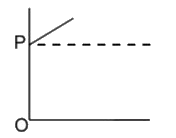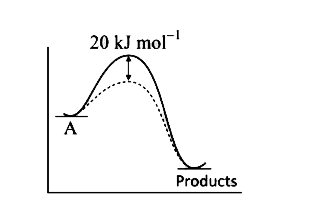A→ Product and (dxdt)=k[A]2. If log (dxdt) is plotted against log [A], then graph is of the type:
A

B

C

D

Video Solution
Text Solution
The correct Answer is:C
|
Answer
Step by step video, text & image solution for A rarr Product and ((dx)/(dt)) = k [A]^(2). If log ((dx)/(dt)) is plotted against log [A], then graph is of the type: by Chemistry experts to help you in doubts & scoring excellent marks in Class 12 exams.
Updated on:21/07/2023
Topper's Solved these Questions
- BOOK - MOTIONCHAPTER - Chemical KineticsEXERCISE - Exercise -1 (Methods to monitor the progress of reaction)4videos
Chemical Kinetics
- BOOK - MOTIONCHAPTER - Chemical KineticsEXERCISE - Exercise -1 (Arrhenius equation)6videos
Chemical Kinetics
- BOOK - MOTIONCHAPTER - Chemical KineticsEXERCISE - Exercise -1 (Zero order reaction, 1st order reaction , 2nd order reaction & nth order reaction)11videos
Chemical Kinetics
- BOOK - MOTIONCHAPTER - CHEMICAL EQUILIBRIUMEXERCISE - Exercise - 420videos
CHEMICAL EQUILIBRIUM
- BOOK - MOTIONCHAPTER - CLASSROOM PROBLEMS EXERCISE - Electrochemistry22videos
CLASSROOM PROBLEMS
Similar Questions
Knowledge Check
- Question 1 - Select One
A+B→Product,dxdt=k[A]a[B]b If (dxdt)=k, then order of reaction is :
A4B2C1D0 - Question 2 - Select One
For Freundlich isotherm, a groph of log x/m is plotted against log p.
A1/n, kBlog 1/n, kC1/n log kDlog 1/n, log k - Question 3 - Select One
For the reaction: A+B→ product dxdt=k[A]a[B]b
if dxdt=k, then the order of the reaction is:A4B3C1D0
∫log(5+t)dt
View Solution(logx)2xdx
View SolutionFor the following reaction,
A500K−−→ Products
A400K/catalyst−−−−−−−−→ Product
If (−d[A]dt)500K=−(d[A]dt)400K
no catalyst in presence of catalyst Then Ea is approximately :
 View Solution
View SolutionIf y=2log x , then dydt is
View Solution∫1/2−1/2cosxlog(1+x1−x)dx=klog2, then k equals
View Solution

